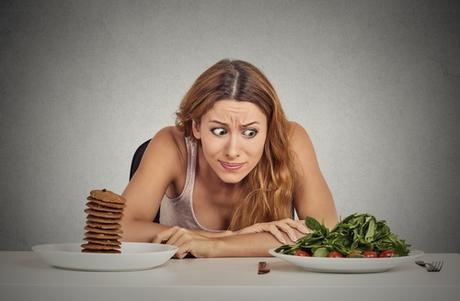If you are one of the thousands of Americans who want to lose weight, then you may have tried your hand at some of those “fad diets.” The Atkins Diet, South Beach Diet, and the Zone Diet are just a few options.
If you are not finding much success with these sorts of diets, then you are not alone. Research shows that fad diets do not work. In fact, they can lead to more substantial weight gain once you stop dieting.
The good news is that you can lose weight without having to exercise. This is what many people are looking for. However, you need to commit yourself to a change in the way you eat instead of going all in when it comes to the latest and greatest diet fad.
The no bread diet does encourage a lifestyle change. To learn about the diet, why it works, and also how you can follow it, keep reading.
How Does The No Bread Diet Work?

To understand why this can lead to weight loss, you need to look at how the body processes the different types of carbohydrates that you consume. The simplest of all carbohydrates are sugars, and these sugars include monosaccharides and disaccharide. Both of these kinds of sugars are broken down into glucose.
Polysaccharides are more complex sugar chains that make up refined starches. These starches are the ones that make up white bread, cakes, and donuts. Polysaccharides break down fairly easily into glucose as well.
While sugars and simple starches break down into sugar that provides your body with energy, sugar has no nutritional value. This means that you get no benefit out of the simple starches, and since the calories you consume from the starches are “empty” ones, you are likely to feel hungry soon after eating them. This leads to overeating issues and weight gain due to the consumption of more and more calories.
What About Complex Carbohydrates?
Complex carbohydrates are encouraged when following a no bread diet. These starches are ones made from much longer chains of sugars. It takes time for the starches to digest and glucose is released slowly into the body. This helps to provide you with more long-term energy.
Complex starch foods are also filled with fiber. Fiber is a plant-based fibrous compound which can be found in vegetables and whole grains. Fiber makes you feel fuller for longer and less likely to reach for a high-calorie snack.
In fact, studies show that following a high-fiber diet alone can help you to lose weight, so the simple act of working to increase your intake of the complex starches is a great first step to weight loss.
What Foods Can Be Eaten?

There are many carbohydrate rich foods that can be eaten on a no bread diet, but you do need to make sure that you stick to the healthy and complex varieties. Also, most no bread diets place complex carbs in tiers with foods that you can eat freely and with ones that should be limited.
While wholesome whole grain foods can be consumed, breads and pastas should be significantly reduced.
Some of the high fiber, complex carbohydrate foods that you can eat freely on the diet include:
- Quinoa
- Lentils
- Peas
- Lima beans (and most other beans)
- Nuts
- Seeds
- Almost all fresh fruits
- Most fresh vegetables
Other foods that can be eaten on a daily basis include:
- Eggs
- Chicken
- Turkey
- Pork
- Fish
Foods that can be eaten in moderation (two to three times a week) include:
- Milk, cheese, yogurt
- Brown rice
- Oatmeal (steel-cut and rolled)
- Whole wheat bread/pasta (these foods should be limited significantly)
Foods that you should completely avoid, if possible, include:
- Crackers
- Cereal
- White bread
- Rolls
- White rice
- Refined pastas
- Chips
- Tortillas
- Potatoes (sweet potatoes can be eaten on the diet)
- Sweets
- Sugary drinks
While sweets and sugary drinks are included on the list of foods to avoid, you can eat some foods in moderation that contain honey, agave, and stevia sweeteners. These are natural sweeteners that contain fructose and they can be found in some sugar-free candies, cookies, and soft drinks.
Fructose does get broken down into glucose. However, fructose tastes much sweeter than glucose, so you only need a little of it to gain the same sweetness as you would with sugar. This means that you can satisfy your sweet tooth with a dash of honey or a sprinkle of stevia on some of your whole fruit pieces, instead of adding a teaspoon or more of sugar. Also, you can indulge in a sugar-free cookie made with stevia and add very little glucose to your body once the stevia gets broken down.
The No Bread Diet In A Nutshell
If you have looked over the list of acceptable foods that you can eat on the no bread diet, then you can probably see that the diet emphasizes a diet rich in fruits, vegetables, and lean meats.
A recent study completed by researchers at the Imperial College London shows that a diet that includes 10 servings of fruits and vegetables a day is suggested to ward off diseases and ailments like coronary heart disease, cancer, and strokes.
This means that you can lose weight while following the no bread diet and also maintain your overall health. This is not something that can be said of some of the most popular fad diets.
Also, to ensure success, the no bread diet encourages the consumption of many different foods. It does not focus completely on exclusion. Most people can find more than a few foods they enjoy on the eating plan to keep the diet a mainstay of an overall lifestyle change.
There are a few things that you should do to help yourself stay committed to your new eating plan. Make sure to drink plenty of water during the day, especially in the morning. This is a good way for you to burn fat and lose weight.
Also, work on a meal plan at the beginning of the week that you can follow each day. This is a good way to vary your diet to keep yourself from becoming bored with your meals. It also assists you in choosing healthy and complex carbohydrate foods and spreading out the “sometimes” foods thought the week. If this type of meal planning does not work for you, then consider keeping a list of the “approved” foods with you at all times so your are encouraged to make the right food choices.
It can take some time to see the weight loss results that you desire after changing your diet plan, so you should try to be a bit patient as well.
